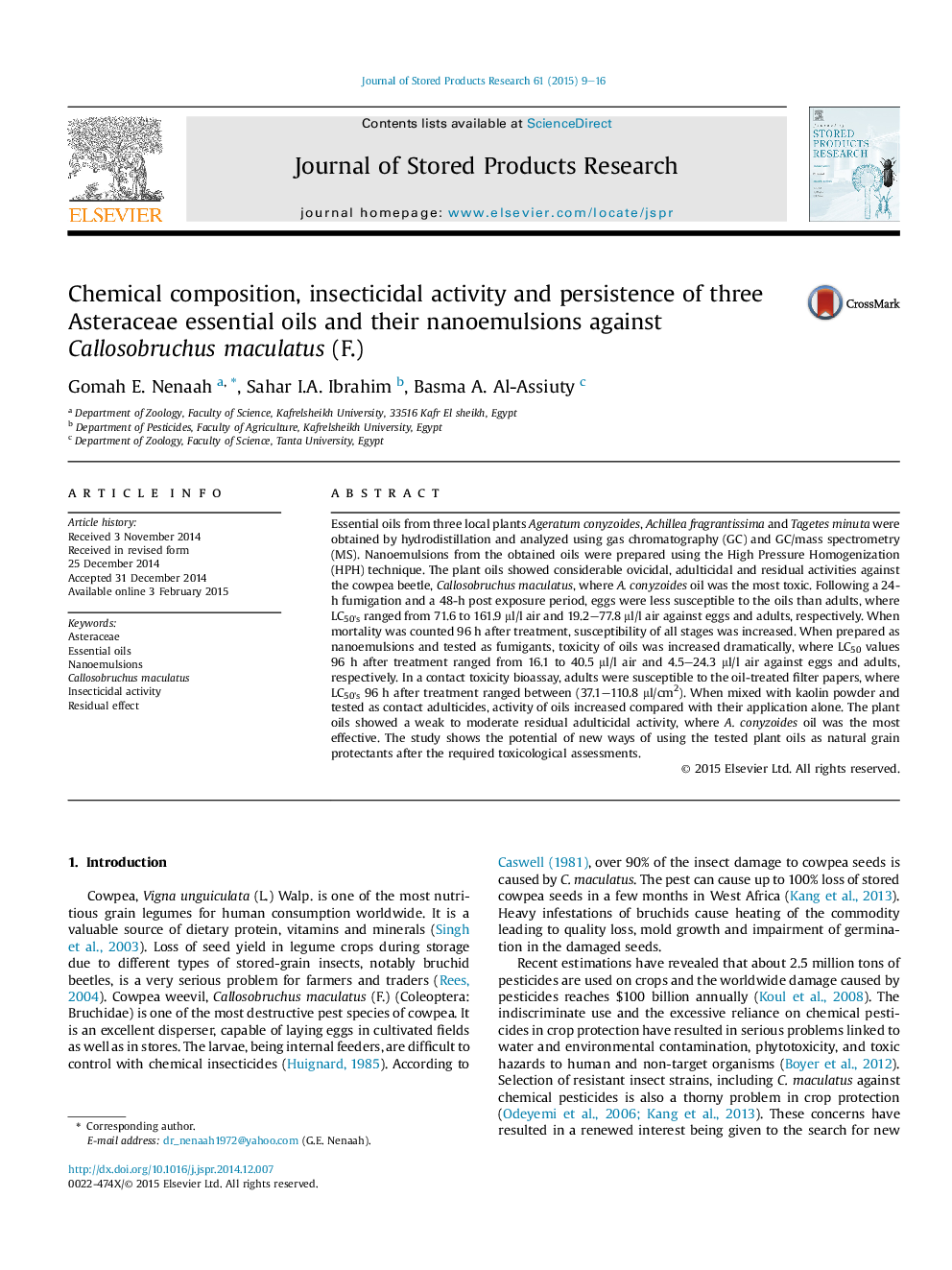| کد مقاله | کد نشریه | سال انتشار | مقاله انگلیسی | نسخه تمام متن |
|---|---|---|---|---|
| 4516995 | 1624927 | 2015 | 8 صفحه PDF | دانلود رایگان |

• Achillea fragrantissima, Tagetes minuta and Ageratum conyzoides oils were isolated.
• The oils were analyzed using Gas Chromatography (GC) and GC/Mass Spectrometry (MS).
• The oils showed insecticidal and residual effect against Callosobruchus maculatus.
• Kaolin powder-treated oils showed increased toxicity against adults.
• Nanoemulsions of the oils showed high fumigant toxicity against eggs and adults.
Essential oils from three local plants Ageratum conyzoides, Achillea fragrantissima and Tagetes minuta were obtained by hydrodistillation and analyzed using gas chromatography (GC) and GC/mass spectrometry (MS). Nanoemulsions from the obtained oils were prepared using the High Pressure Homogenization (HPH) technique. The plant oils showed considerable ovicidal, adulticidal and residual activities against the cowpea beetle, Callosobruchus maculatus, where A. conyzoides oil was the most toxic. Following a 24-h fumigation and a 48-h post exposure period, eggs were less susceptible to the oils than adults, where LC50's ranged from 71.6 to 161.9 μl/l air and 19.2–77.8 μl/l air against eggs and adults, respectively. When mortality was counted 96 h after treatment, susceptibility of all stages was increased. When prepared as nanoemulsions and tested as fumigants, toxicity of oils was increased dramatically, where LC50 values 96 h after treatment ranged from 16.1 to 40.5 μl/l air and 4.5–24.3 μl/l air against eggs and adults, respectively. In a contact toxicity bioassay, adults were susceptible to the oil-treated filter papers, where LC50's 96 h after treatment ranged between (37.1–110.8 μl/cm2). When mixed with kaolin powder and tested as contact adulticides, activity of oils increased compared with their application alone. The plant oils showed a weak to moderate residual adulticidal activity, where A. conyzoides oil was the most effective. The study shows the potential of new ways of using the tested plant oils as natural grain protectants after the required toxicological assessments.
Figure optionsDownload as PowerPoint slide
Journal: Journal of Stored Products Research - Volume 61, March 2015, Pages 9–16